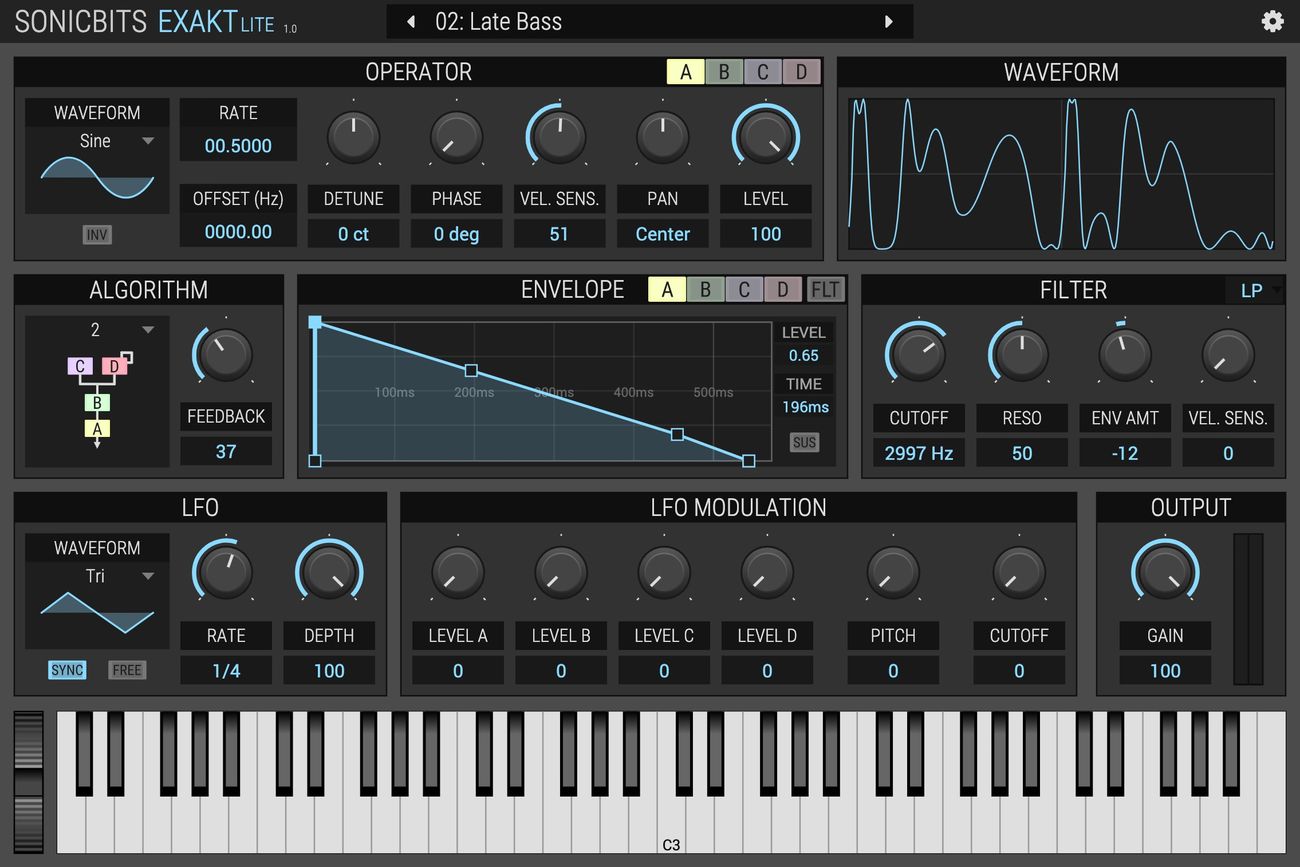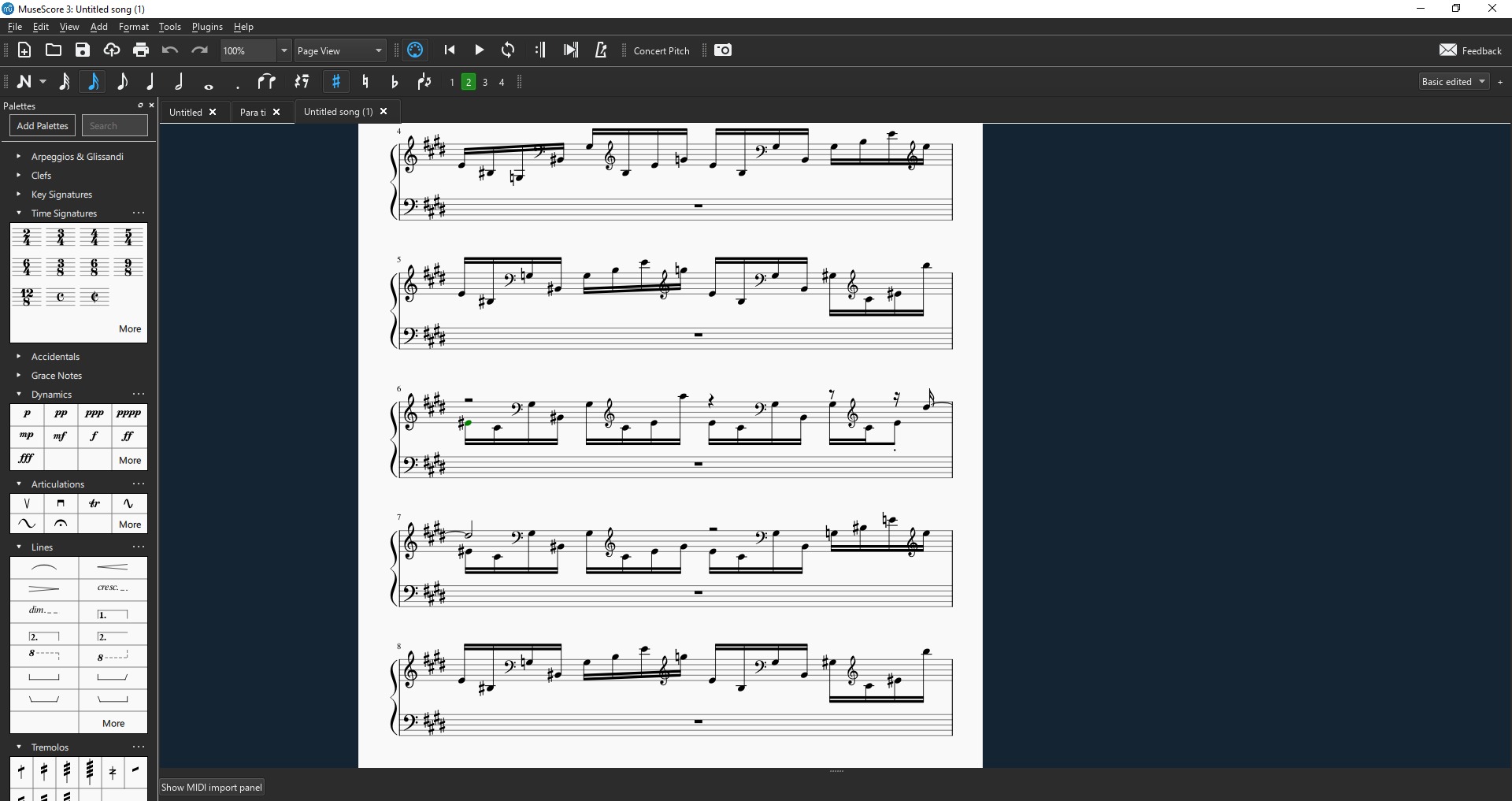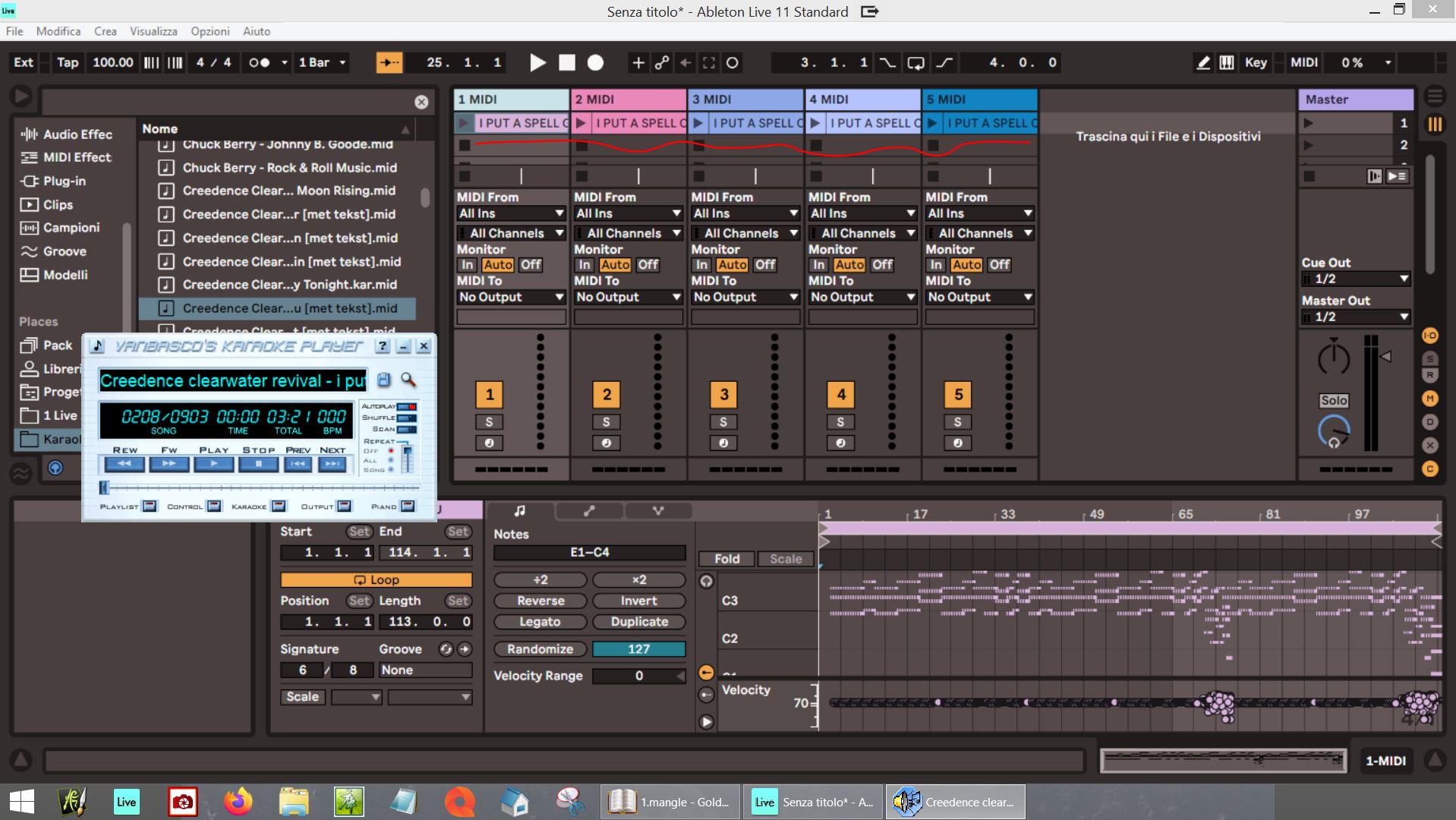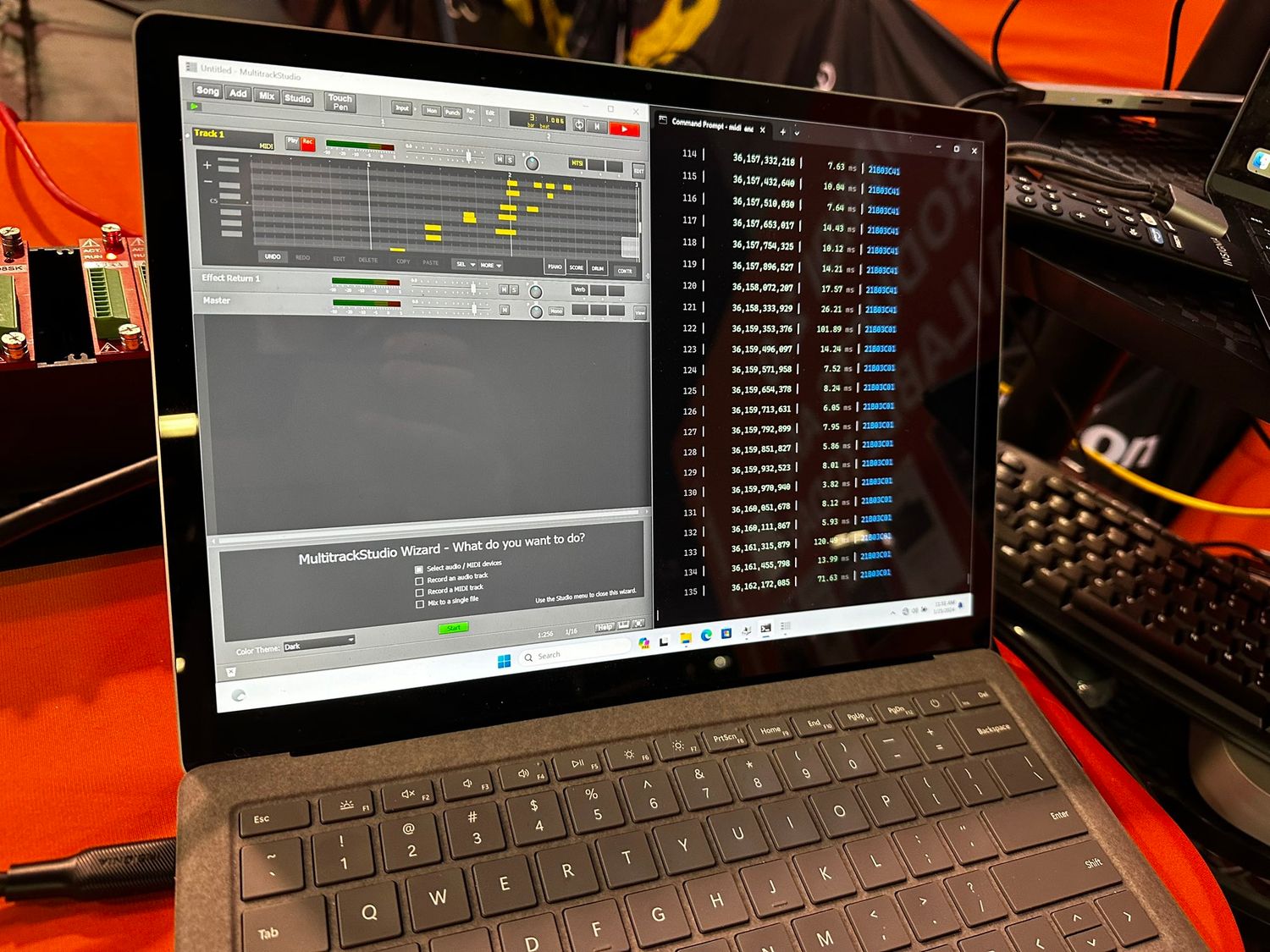Home>Production & Technology>MIDI>What Is The Format Of A MIDI File?
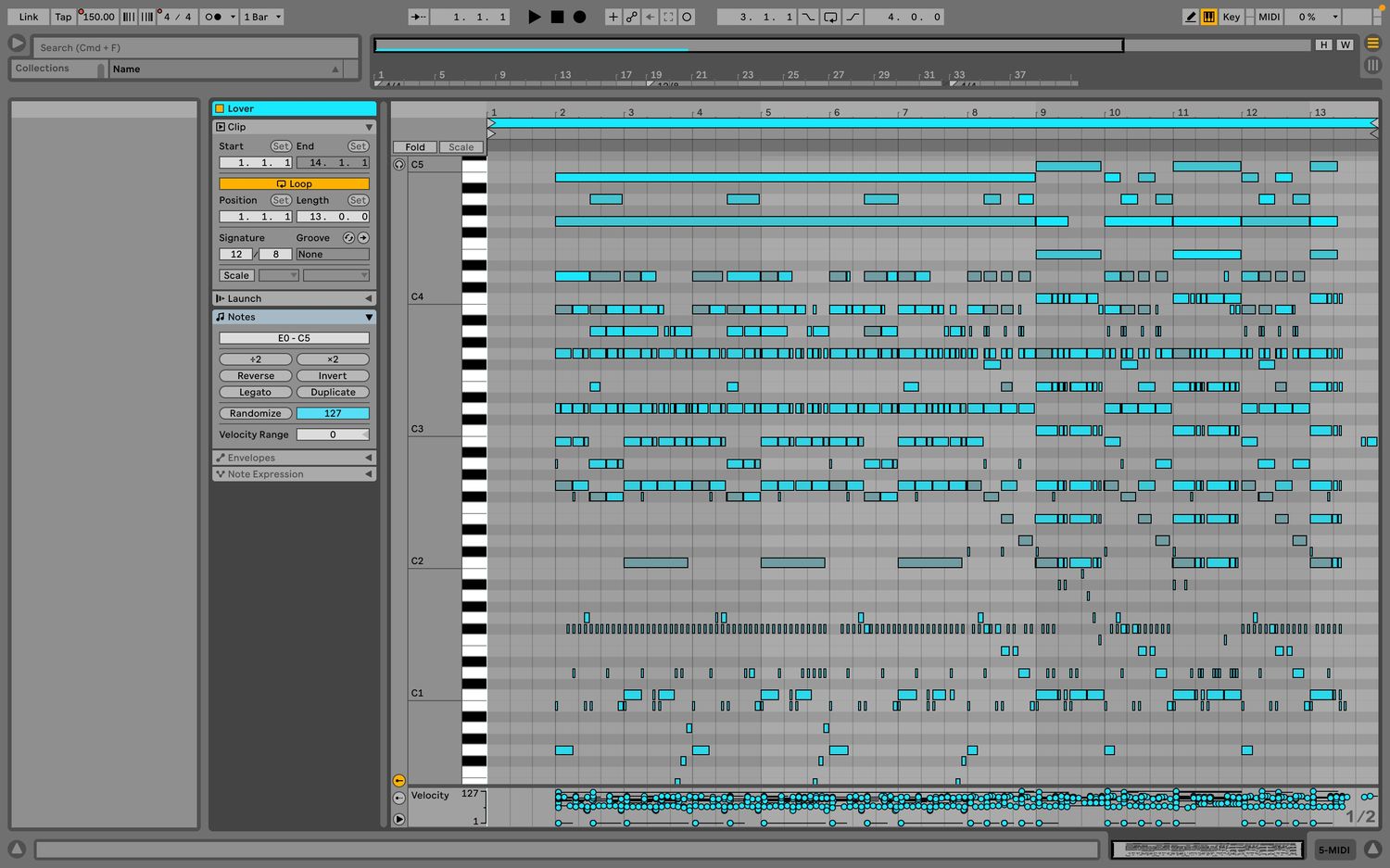

MIDI
What Is The Format Of A MIDI File?
Published: February 22, 2024
Learn about the format of a MIDI file and its uses. Discover how MIDI technology revolutionizes music creation and production.
(Many of the links in this article redirect to a specific reviewed product. Your purchase of these products through affiliate links helps to generate commission for AudioLover.com, at no extra cost. Learn more)
Table of Contents
Introduction
MIDI, which stands for Musical Instrument Digital Interface, is a versatile and widely used protocol in the world of music production, allowing electronic instruments, computers, and other devices to communicate and synchronize with each other. One of the key components of MIDI technology is the MIDI file, which serves as a digital representation of musical data. Understanding the format of a MIDI file is essential for musicians, producers, and anyone involved in music technology.
In this article, we will delve into the intricacies of MIDI file formatting, shedding light on its structure, events, and different file formats. By gaining insight into the inner workings of MIDI files, readers will develop a deeper understanding of how digital music is stored and transmitted, paving the way for enhanced creativity and technical proficiency in music production and performance.
Let's embark on a fascinating journey into the world of MIDI file formats, where we will unravel the complexities of MIDI events, track chunks, time division, and the various MIDI file formats, including Standard MIDI File (SMF) and MIDI Time Stamping (MTS). Whether you are a seasoned music producer, an aspiring musician, or simply a curious enthusiast, this exploration of MIDI file formatting is sure to expand your knowledge and appreciation of the intricate mechanisms behind digital music representation.
MIDI File Structure
The MIDI file structure is the foundation upon which digital musical data is organized and stored. At its core, a MIDI file is a sequence of MIDI messages that encapsulate musical information such as note events, tempo changes, and control commands. Understanding the structure of a MIDI file is crucial for comprehending how musical data is formatted and transmitted in the digital realm.
At a fundamental level, a MIDI file consists of a header chunk followed by one or more track chunks. The header chunk provides essential information about the MIDI file, including the timing format and the number of tracks it contains. This initial segment sets the stage for the subsequent track chunks, which house the actual musical data in the form of MIDI events.
Within each track chunk, MIDI events are organized chronologically, representing the sequence of musical actions and instructions. These events encompass a wide range of actions, such as note on/off commands, pitch bends, control changes, and more. Each MIDI event is timestamped to denote its position in time, allowing for precise playback and synchronization.
Furthermore, the MIDI file structure incorporates a time division parameter, which determines the temporal resolution of the musical data. This parameter dictates how the timing information within the MIDI file is interpreted, influencing the precision of note durations and tempo changes during playback.
In essence, the MIDI file structure serves as a meticulously crafted framework that encapsulates the intricacies of musical expression in a digital format. By dissecting this structure, musicians, producers, and software developers can gain a profound understanding of how musical data is organized and transmitted within the MIDI ecosystem.
As we continue our exploration of MIDI file formatting, we will delve deeper into the specifics of MIDI events, track chunks, time division, and the diverse MIDI file formats that contribute to the rich tapestry of digital music representation. Through this journey, we aim to demystify the complexities of MIDI file structure, empowering individuals to harness the full potential of MIDI technology in their musical endeavors.
MIDI Events
MIDI events form the essence of a MIDI file, encapsulating the intricate details of musical expression in a digital format. These events are the building blocks of musical data, comprising a diverse array of commands and instructions that govern the playback and interpretation of MIDI files.
At the heart of MIDI events lie note on/off commands, which signify the initiation and cessation of musical notes. When a musician plays a note on a MIDI-enabled instrument, a note-on event is generated, indicating the pitch, velocity, and channel of the note. Conversely, when the note is released, a note-off event is triggered, marking the end of the note's duration. These fundamental events form the basis of melodic expression in MIDI files, allowing for the faithful reproduction of musical performances.
In addition to note events, MIDI encompasses a plethora of control commands that shape the timbre, dynamics, and expression of the music. Control change events, for instance, enable the manipulation of parameters such as volume, modulation, and pan position, providing a versatile toolkit for shaping the sonic landscape within a MIDI file. Furthermore, pitch bend events allow for the nuanced modulation of pitch, facilitating expressive pitch variations akin to those produced by traditional instruments.
Moreover, MIDI events extend beyond note-related commands, encompassing tempo changes, time signature alterations, and synchronization cues. Tempo change events enable the adjustment of playback speed, facilitating seamless transitions between musical sections and enhancing the dynamic range of MIDI compositions. Time signature events, on the other hand, dictate the rhythmic framework of the music, defining the number of beats per measure and the type of note that receives the primary emphasis.
Furthermore, MIDI events encompass system-exclusive (SysEx) messages, which facilitate the communication of proprietary data and device-specific commands. These messages enable seamless integration with external hardware and software, unlocking a realm of possibilities for customized MIDI applications and interoperability.
As we unravel the intricacies of MIDI events, it becomes evident that they serve as the elemental constituents of musical expression within the MIDI domain. By comprehending the diverse array of MIDI events and their implications, musicians and technologists can harness the full potential of MIDI technology, enriching their creative pursuits and technical endeavors.
This comprehensive understanding of MIDI events sets the stage for a deeper exploration of track chunks, time division, and the various MIDI file formats, shedding light on the multifaceted landscape of digital music representation. Through this journey, we aim to demystify the complexities of MIDI file formatting, empowering individuals to unlock new realms of creativity and innovation within the realm of MIDI technology.
Track Chunk
The track chunk is a pivotal component of the MIDI file structure, serving as a container for the musical data that defines the sequence of events within a MIDI composition. As the name suggests, each track chunk encapsulates a distinct musical track, enabling the organization and synchronization of multiple musical elements within a single MIDI file.
Within the track chunk, MIDI events are meticulously arranged in chronological order, delineating the progression of musical actions and instructions. These events encompass a wide spectrum of musical gestures, including note on/off commands, control changes, pitch bends, and tempo variations, among others. By encapsulating these events within the track chunk, the MIDI file achieves a granular representation of musical expression, facilitating precise playback and interpretation.
Moreover, the track chunk accommodates the hierarchical structuring of musical data, allowing for the segregation of individual tracks within a MIDI composition. This feature is particularly valuable in multi-track MIDI files, where distinct musical elements such as melody, harmony, and rhythm can be organized into separate track chunks, enabling independent manipulation and editing.
Furthermore, the track chunk incorporates timing information for each MIDI event, ensuring accurate synchronization and temporal alignment during playback. This temporal precision is essential for maintaining the rhythmic integrity and expressive nuances of the musical performance, contributing to the faithful reproduction of musical compositions within the MIDI domain.
In essence, the track chunk serves as a meticulously curated repository of musical data, harnessing the power of MIDI events to encapsulate the intricacies of musical expression in a digital format. By delineating the musical elements into discrete track chunks, the MIDI file structure enables the seamless organization and playback of diverse musical components, fostering a rich tapestry of sonic exploration and creativity.
As we delve deeper into the nuances of the track chunk, we gain a profound appreciation for its role in shaping the architecture of MIDI compositions. This understanding sets the stage for a comprehensive exploration of time division and the diverse MIDI file formats, shedding light on the multifaceted landscape of digital music representation within the MIDI ecosystem. Through this journey, we aim to demystify the complexities of MIDI file formatting, empowering individuals to harness the full potential of MIDI technology in their musical endeavors.
Time Division
Time division is a critical parameter within the MIDI file structure, playing a pivotal role in determining the temporal resolution and synchronization of musical data. At its core, the time division parameter governs how the timing information within the MIDI file is interpreted, influencing the precise representation of note durations, tempo changes, and rhythmic intricacies during playback.
The time division parameter is expressed in one of two formats: ticks per quarter note (PPQ) or frames per second. The PPQ format, which is the most commonly used, denotes the number of ticks that correspond to a single quarter note. This value dictates the temporal granularity of the MIDI file, influencing the precision with which musical events are timestamped and synchronized. A higher PPQ value results in finer temporal resolution, allowing for more nuanced expression and rhythmic intricacies within the musical composition.
Alternatively, the frames per second format is utilized in MIDI files that adhere to the SMPTE (Society of Motion Picture and Television Engineers) timecode standard. This format aligns the MIDI timing with the frame rate of film and video production, enabling seamless integration of MIDI music with visual media. By synchronizing the MIDI file playback with the temporal framework of film and video, this format facilitates the creation of immersive and tightly synchronized audio-visual experiences.
The time division parameter is instrumental in shaping the temporal dynamics of MIDI compositions, influencing the playback speed, rhythmic precision, and expressive nuances of the music. By defining the temporal resolution and synchronization framework, the time division parameter empowers musicians, producers, and software developers to craft compelling musical experiences that resonate with precision and emotive depth.
In essence, time division serves as the temporal backbone of MIDI file formatting, underpinning the rhythmic integrity and synchronization capabilities of digital musical data. By understanding the nuances of time division, individuals within the music and technology domains can harness the full potential of MIDI technology, unlocking new realms of creativity and innovation within the digital music landscape.
MIDI File Formats
MIDI file formats encompass a diverse array of specifications and standards that govern the organization, storage, and transmission of musical data in the MIDI domain. These formats play a pivotal role in facilitating interoperability, portability, and versatility within the realm of digital music representation, catering to a wide spectrum of musical applications and technological environments.
Standard MIDI File (SMF) Format
The Standard MIDI File (SMF) format stands as a cornerstone of MIDI file compatibility and universality, offering a standardized framework for storing and exchanging musical data across different platforms and software applications. SMF files are characterized by their ability to encapsulate multiple tracks of MIDI data, enabling the seamless integration of diverse musical elements within a single file. This multi-track capability empowers musicians, producers, and composers to craft intricate and layered compositions, fostering a rich tapestry of sonic expression and creativity.
Furthermore, SMF files adhere to a universal file structure, encompassing header and track chunks that encapsulate essential information and musical data, respectively. This standardized structure ensures consistent interpretation and playback of SMF files across a myriad of MIDI-compatible devices and software platforms, fostering a harmonious ecosystem of musical interoperability.
MIDI Time Stamping (MTS) Format
In contrast to the traditional SMF format, MIDI Time Stamping (MTS) represents a cutting-edge approach to MIDI file formatting, catering to the precise synchronization and timing requirements of modern music production and performance environments. MTS files leverage high-precision timing information, enabling the accurate alignment of MIDI events with external clock sources and synchronization frameworks. This temporal precision is particularly valuable in live performance scenarios, where tight synchronization between MIDI instruments, software, and external devices is paramount.
Moreover, MTS format supports the transmission of MIDI data over network protocols, facilitating the seamless integration of MIDI technology within networked music environments and collaborative production workflows. By embracing network-centric paradigms, MTS format paves the way for innovative applications in live music performance, remote collaboration, and distributed music production, transcending the constraints of traditional MIDI file formats.
In essence, MIDI file formats encompass a rich tapestry of specifications and standards that cater to the diverse needs and technological landscapes of the music industry. By embracing the universality of SMF format and the precision of MTS format, musicians, producers, and technologists can navigate the intricate nuances of MIDI file formatting, unlocking new realms of creativity and innovation within the digital music ecosystem.
Standard MIDI File (SMF) Format
The Standard MIDI File (SMF) format stands as a cornerstone of MIDI file compatibility and universality, offering a standardized framework for storing and exchanging musical data across different platforms and software applications. SMF files have become integral to the music industry, serving as the go-to format for preserving musical compositions, facilitating seamless collaboration, and enabling interoperability across a myriad of MIDI-compatible devices and software platforms.
At the heart of SMF's versatility lies its ability to encapsulate multiple tracks of MIDI data within a single file. This multi-track capability empowers musicians, producers, and composers to craft intricate and layered compositions, fostering a rich tapestry of sonic expression and creativity. Whether it's a symphonic orchestration, a multi-layered electronic production, or a complex ensemble arrangement, SMF format accommodates the diverse musical elements with precision and cohesion.
Furthermore, SMF files adhere to a universal file structure, encompassing header and track chunks that encapsulate essential information and musical data, respectively. This standardized structure ensures consistent interpretation and playback of SMF files across a myriad of MIDI-compatible devices and software platforms, fostering a harmonious ecosystem of musical interoperability. As a result, musicians and producers can seamlessly exchange musical ideas, collaborate on compositions, and integrate MIDI data into various software applications without encountering compatibility issues.
The ubiquity of SMF format transcends traditional music production, extending into educational, archival, and performance realms. Educational institutions leverage SMF files to disseminate musical exercises, practice materials, and instructional content, fostering a standardized and accessible platform for music education. Additionally, SMF files serve as a valuable archival medium, preserving historical musical works, performances, and cultural expressions for posterity.
In essence, the Standard MIDI File (SMF) format stands as a testament to the enduring legacy of MIDI technology, providing a robust and adaptable framework for the storage, exchange, and preservation of musical data. Its multi-track capacity, universal file structure, and seamless interoperability have solidified its position as a foundational element in the digital music landscape, empowering musicians, producers, and music enthusiasts to engage in a rich tapestry of sonic exploration and collaboration.
MIDI Time Stamping (MTS) Format
The MIDI Time Stamping (MTS) format represents a cutting-edge approach to MIDI file formatting, catering to the precise synchronization and timing requirements of modern music production and performance environments. MTS files leverage high-precision timing information, enabling the accurate alignment of MIDI events with external clock sources and synchronization frameworks. This temporal precision is particularly valuable in live performance scenarios, where tight synchronization between MIDI instruments, software, and external devices is paramount.
At the core of MTS format lies its ability to provide temporal accuracy at a microsecond level, surpassing the temporal resolution offered by traditional MIDI file formats. This heightened precision is instrumental in ensuring seamless synchronization between MIDI-enabled devices, audiovisual systems, and external clock references, culminating in a cohesive and immersive musical experience. Whether it is synchronizing music with visual media in live performances, aligning MIDI instruments with audio processing equipment, or integrating MIDI technology within networked music environments, MTS format serves as a linchpin for temporal integrity and synchronization fidelity.
Moreover, MTS format supports the transmission of MIDI data over network protocols, facilitating the seamless integration of MIDI technology within networked music environments and collaborative production workflows. By embracing network-centric paradigms, MTS format paves the way for innovative applications in live music performance, remote collaboration, and distributed music production, transcending the constraints of traditional MIDI file formats. This network compatibility enables musicians, producers, and audio engineers to engage in real-time collaborative performances, remote recording sessions, and distributed music production initiatives, fostering a global ecosystem of musical creativity and connectivity.
In essence, MIDI Time Stamping (MTS) format stands as a testament to the evolution of MIDI technology, embracing precision, network compatibility, and real-time synchronization to cater to the dynamic needs of contemporary music production and performance. Its high-precision temporal accuracy and network integration capabilities position it as a catalyst for innovation, enabling musicians, producers, and technologists to navigate the intricate nuances of MIDI file formatting, unlocking new realms of creativity and innovation within the digital music ecosystem.
Conclusion
In conclusion, the exploration of MIDI file formatting has unveiled the intricate mechanisms that underpin the digital representation of musical data. From the meticulous structure of MIDI files to the nuanced expression encapsulated within MIDI events, we have delved into the core components that define the landscape of MIDI technology.
The MIDI file structure, with its header and track chunks, serves as a foundational framework for organizing and storing musical data. This structure not only facilitates the representation of diverse musical elements but also enables precise synchronization and playback, laying the groundwork for expressive musical renditions.
Moreover, the granularity of MIDI events, ranging from note commands to tempo variations, embodies the essence of musical expression within the digital realm. These events form the building blocks of creativity, allowing musicians and producers to craft emotive compositions with unparalleled precision and depth.
The significance of time division in shaping the temporal dynamics of MIDI compositions cannot be overstated. Whether it's the granularity of ticks per quarter note or the synchronization with SMPTE timecode standards, time division governs the rhythmic integrity and synchronization capabilities of MIDI files, empowering creators to sculpt musical experiences with finesse.
Furthermore, the diverse MIDI file formats, including the universal Standard MIDI File (SMF) and the precision-driven MIDI Time Stamping (MTS), cater to a spectrum of musical needs, from collaborative composition to live performance synchronization. These formats embody the adaptability and innovation that define the evolution of MIDI technology, fostering a dynamic ecosystem of musical creativity and connectivity.
As we reflect on the multifaceted landscape of MIDI file formatting, it becomes evident that MIDI technology transcends mere data representation; it embodies the fusion of artistry and technology, enabling boundless possibilities for musical expression and collaboration.
In essence, the journey through MIDI file formatting has illuminated the profound impact of digital innovation on musical creativity. By unraveling the complexities of MIDI technology, we have unveiled a world where precision, expression, and collaboration converge to shape the future of music.
As we embrace the ever-evolving landscape of MIDI technology, we are poised to embark on a continuum of creative exploration, where the fusion of musical artistry and technological ingenuity knows no bounds.


